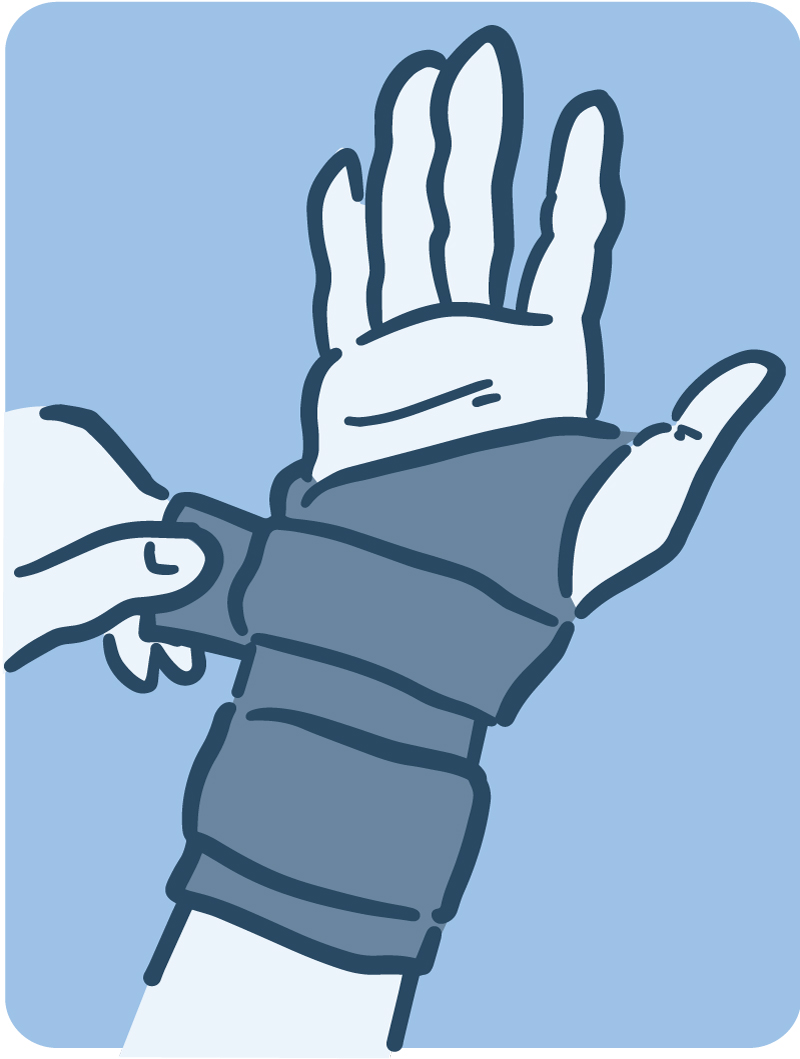Finger Numbness
Could It Be Carpal Tunnel Syndrome?

Do you have tingling or numbness in your hand or fingers? It could be a sign that you have carpal tunnel syndrome. Often, you’ll get pain in your thumb, index, and middle finger. You may find that your hands are clumsy, and it’s harder to grip things.
Symptoms of carpal tunnel usually start slowly. Many people first notice the signs overnight because they sleep with their wrists bent. As time goes on, that tingling or numbness may last through the day as well.
Carpal tunnel syndrome occurs when one of the main nerves in your forearm, called the median nerve, is squeezed or compressed.
“That nerve is really important in the function of the hand,” says Dr. Kevin Chung, chief of hand surgery at the University of Michigan. It gives sensation to the palm side of your thumb, index, middle finger, and part of the ring finger. It also moves some of your hand muscles.
“It can become trapped in the very tight space that goes through your wrists,” he says. “That space is known as the carpal tunnel.”
Carpal tunnel syndrome is usually caused by a combination of factors that shrink this space. The heavy, repetitive work of certain jobs can contribute to carpal tunnel syndrome. It’s common to people who work in meat-packing plants or perform intense assembly line work. Injury to the wrist can also cause swelling that compresses the median nerve.
But it’s often unclear why some people develop carpal tunnel syndrome. People who have rheumatoid arthritis or an underactive thyroid gland are more likely to develop carpal tunnel syndrome. Fluid retention during pregnancy or menopause can also contribute.
To treat the issue, doctors will first try splinting the wrist. This limits movement and helps reduce pressure on the nerve. Sometimes splints are only worn at night. During the day, experts recommend taking breaks from tasks that put stress on your hands. Over-the-counter pain relievers can help manage the discomfort.
For more tips that may help relieve carpal tunnel symptoms, see the Wise Choices box. If these steps don’t improve the condition, it may be time to turn to surgery.
“Surgery is necessary when the patient has persistent numbness of the hand and when the muscles stop working because the nerve is not functioning well,” says Chung.
Carpal tunnel surgery is one of the most common surgeries in the U.S. It involves dividing the ligaments—bands of elastic tissue—that support the wrist to reduce pressure on the median nerve. These ligaments usually grow back after surgery in a way that gives the nerve more room. The surgery only takes about 10 to 30 minutes.
“Relief can be quite immediate, between one to two weeks,” says Chung. “But it depends on how badly the nerve was compressed and for how long.”
Some strategies, like stretching your hands and wearing fingerless gloves, may help prevent carpal tunnel syndrome. But research hasn’t proven that these approaches work.
Many conditions can mimic carpal tunnel symptoms, so it’s important to go to a medical professional with expertise in the condition.
“Carpal tunnel syndrome can be disabling. It is so important that patients choose a surgeon wisely,” says Chung. He recommends choosing a board-certified hand surgeon trained to diagnose and treat carpal tunnel.
NIH Office of Communications and Public Liaison
Health and Science Publications Branch
Building 31, Room 5B52
Bethesda, MD 20892-2094
Contact Us:
nihnewsinhealth@od.nih.gov
Phone: 301-451-8224
Share Our Materials: Reprint our articles and illustrations in your own publication. Our material is not copyrighted. Please acknowledge NIH News in Health as the source and send us a copy.
For more consumer health news and information, visit health.nih.gov.
For wellness toolkits, visit www.nih.gov/wellnesstoolkits.




